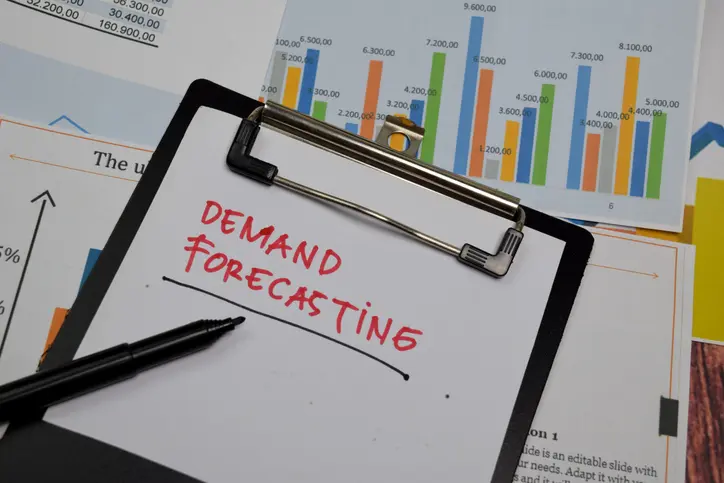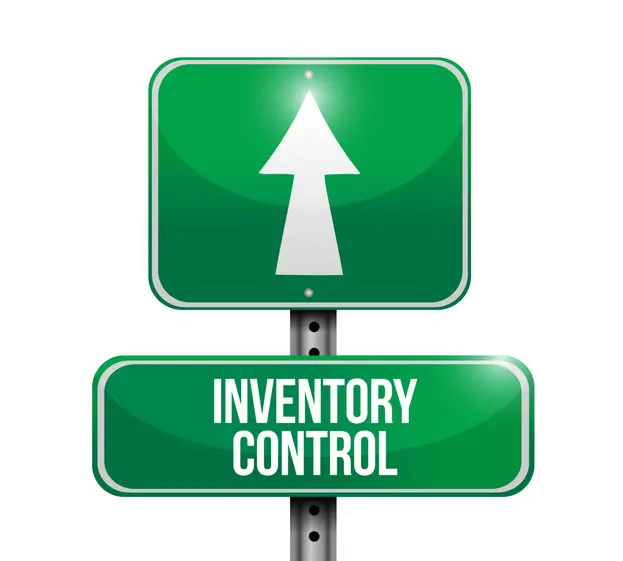The product life cycle (PLC) is a vital framework in business strategy, outlining the stages a product moves through, from launch to eventual decline. Understanding these phases allows companies to adapt their marketing strategies and make informed decisions that maximise profitability and maintain competitive edge. Anticipating market trends and evolving consumer needs empowers businesses to fine-tune their offerings, pricing, and promotions to stay relevant.
Beyond tracking sales, the PLC serves as a strategic guide, helping companies innovate and plan effectively in an ever-changing market. With rapid shifts in consumer preferences and technological advancements, a deep understanding of the product life cycle empowers businesses to stay agile, enhance customer loyalty, and drive sustainable growth for long-term success.
What is the Product Life Cycle?
The Product Life Cycle (PLC) is a key marketing framework that traces a product’s journey from its debut to its eventual decline. Divided into four main stages—introduction, growth, maturity, and decline—each phase presents unique challenges and opportunities in marketing, consumer behaviour, and financial outcomes.
Analysing the PLC results in businesses making informed decisions about resource allocation, ensuring that strategies align with the product’s current stage. For example, companies may invest heavily in marketing during the growth phase to harness rising demand, or implement cost-cutting during the decline phase.
Understanding the PLC also allows businesses to optimise marketing efforts, shifting focus from awareness-building in the introduction stage to differentiation during maturity. Moreover, it provides a roadmap for anticipating market trends and adapting strategies, enabling businesses to remain agile and responsive in a dynamic market environment.
The Four Stages of the Product Life Cycle
The product life cycle consists of four distinct stages—Introduction, Growth, Maturity, and Decline—each bringing unique challenges and opportunities. Mastering these stages is essential for aligning strategies, optimising marketing efforts, and maximising profitability at every phase.
Introduction Stage
In this initial phase, companies focus on launching the product and building awareness. Sales are typically low, and high marketing investments are necessary to educate potential customers. The goal is to engage early adopters, create buzz, and establish a foothold in the market. Pricing strategies, such as penetration pricing or skimming, play a critical role in driving early adoption and setting the product on a path to success.
Growth Stage
As awareness grows, the Growth Stage sees a surge in sales and profitability. With demand rising, companies can capitalise on expanded distribution, refine products based on feedback, and optimise production processes. However, increased competition requires effective scaling and aggressive marketing to differentiate the product and secure market share. This phase is an opportunity for companies to establish brand loyalty and maximise growth.
Maturity Stage
The Maturity Stage is marked by market saturation, slowing sales, and intense competition. At this point, the focus shifts to retaining customers and maintaining profitability. Businesses must employ differentiation strategies, such as product updates or exploring new markets, while controlling costs to remain competitive. Success in this stage hinges on innovation, efficiency, and maintaining customer loyalty in a crowded marketplace.
Decline Stage
In the Decline Stage, sales and profitability begin to decrease due to changing consumer preferences, technological advancements, or market saturation. Companies must decide whether to reduce costs, target niche markets, or discontinue the product. Strategies like rebranding, repositioning, or introducing innovations can revitalise interest, while phasing out the product may be necessary in some cases. The Decline Stage requires careful management to minimise losses and prepare for future opportunities.
It is imperative for businesses to understand and adapt to each stage of the product life cycle in order to navigate market challenges, seize opportunities, and drive long-term success.
Strategies to Extend the Product Life Cycle
Extending the life cycle of a product is crucial for increasing profitability and maintaining market relevance. Companies can achieve this by employing innovative strategies that breathe new life into their offerings, ensuring continued revenue generation and competitiveness.
One effective approach is introducing new features or enhancements. Through consistent innovation, whether through advanced technology or improved functionality, businesses can reignite consumer interest and attract both new and existing customers. These improvements signal a commitment to meeting evolving needs and keeping the product fresh.
Expanding into new markets is another powerful tactic. This could involve reaching different geographic regions, demographics, or untapped market segments. For example, a product initially targeted at young adults could be repositioned for an older audience, diversifying the customer base and generating new revenue streams.
Design and aesthetic enhancements can also extend a product’s relevance. Minor tweaks to packaging or a functional redesign can renew consumer interest and change how the product is perceived. Even small adjustments can make a significant impact in a crowded market.
Providing exceptional customer support fosters loyalty, encouraging repeat purchases and positive word-of-mouth. Offering comprehensive warranties, loyalty programs, or excellent service strengthens the customer-brand relationship, extending the product’s life through increased satisfaction.
Repositioning the product by adjusting marketing strategies and emphasising new features aligned with emerging trends—like sustainability or health consciousness—can also prolong its life cycle. Shifting the product’s value proposition is integral to maintaining a sense of congruency with customer preferences and reignite demand.
Finally, targeting a new demographic opens up fresh opportunities. This is achieved through understanding the preferences of different consumer segments and tailoring marketing efforts to their needs, businesses can breathe new life into a declining product, sustaining its market presence.
In summary, these proactive strategies enable companies to extend their product’s life cycle, expand returns, and flourish in a dynamic market. An emphasis on continuous innovation and agility can empower businesses in ensuring their products remain relevant and competitive.
External Factors Influencing the Product Life Cycle
External forces play a pivotal role in shaping the trajectory of a product’s life cycle, influencing performance and strategy at each stage. Understanding these factors enables businesses to adapt and thrive in competitive landscapes.
Market Competition is one of the most significant influences, especially during the growth and maturity stages. Competitors entering the market can saturate demand, pushing companies to innovate, refine marketing strategies, or adjust pricing to maintain consumer interest. As competition intensifies in the maturity phase, businesses often face price wars and must differentiate their products with unique features or superior service to protect their market share.
Changing Consumer Preferences also drive the product life cycle. As consumer behaviours evolve—such as the rising demand for organic, eco-friendly products—businesses must adapt their offerings or risk premature decline. Products that fail to align with shifting tastes quickly lose relevance as customers turn to alternatives that better meet their expectations.
Economic Conditions further shape the product life cycle. During economic downturns, reduced consumer spending can force companies to adjust pricing, scale back production, or refine their strategies to sustain profitability. In contrast, economic booms offer opportunities for growth, stimulating demand and allowing businesses to invest in innovation and marketing.
Technological Influences are another critical factor. Rapid advancements can render products obsolete almost overnight, as seen in the decline of digital cameras and MP3 players with the rise of smartphones. Staying attuned to technological trends is essential for companies looking to maintain their product’s relevance and capitalise on new innovations.
In essence, external factors like competition, consumer preferences, economic shifts, and technological changes dictate the course of a product’s life cycle. Businesses that remain agile, responsive, and proactive can leverage these factors to extend a product’s life, ensuring ongoing relevance and success in an ever-evolving market.
Product Life Cycle vs. Other Strategic Models
The Product Life Cycle (PLC) is a foundational marketing model that maps a product’s journey from introduction to decline. While invaluable for understanding how marketing strategies should evolve over time, the PLC can be contrasted with other strategic models like the BCG Matrix and the International Product Life Cycle (IPL), which offer different perspectives on product performance and positioning.
Comparison with the BCG Matrix
The BCG Matrix, developed by the Boston Consulting Group, categorises products based on market growth and market share into four types: Stars, Question Marks, Cash Cows, and Dogs. Where the PLC focuses on a product’s lifecycle over time, the BCG Matrix gives a snapshot of its current market position. For example, a product in the growth stage of the PLC might be a Star if it holds a high market share, while a product in decline could be a Dog if its market share has dwindled. Together, the two models complement one another—the PLC forecasts a product’s future trajectory, while the BCG Matrix helps businesses make resource allocation decisions based on present market dynamics.
International Product Life Cycle (IPL)
The International Product Life Cycle (IPL) extends the PLC model to global markets, recognising that products go through different life cycle stages in different regions. In developed markets, a product might rapidly progress through the introduction and growth stages, while in emerging markets, it could face slower adoption due to lower consumer awareness or access barriers. The IPL emphasises the need for localised marketing strategies, as cultural, economic, and regulatory differences shape the product’s success in each market. Additionally, a product might be in decline in one region but thriving in another, requiring companies to dynamically manage their global portfolios.
In short, while the PLC provides a timeline for product evolution, models like the BCG Matrix and IPL offer insights into current market positioning and international strategy. Together, they enable businesses to navigate product management more effectively, making informed decisions about resource allocation, marketing strategies, and global expansion.
How to Develop Effective Product Life Cycle Strategies
Crafting effective strategies for each stage of the product life cycle is crucial for maximising success and longevity in a competitive market. By tailoring approaches to the unique challenges of each phase, companies can stay ahead of market dynamics and meet consumer needs.
Introduction Stage Strategies
At this early stage, the focus is on creating awareness. Companies should launch comprehensive advertising campaigns across platforms to reach their target audience. Engaging early adopters through promotional discounts, product trials, and incentives can generate valuable word-of-mouth and brand advocacy. Building buzz through public relations and cultivating a loyal community of supporters sets the foundation for future growth.
Growth Stage Strategies
As demand surges, businesses should focus on scaling operations and increasing market penetration. Expanding distribution channels, optimising customer experience, and maintaining product quality are key to fostering brand loyalty. Companies should also refine their products based on consumer feedback and market trends, while continuing to promote their unique benefits to stand out from emerging competitors.
Maturity Stage Strategies
During market saturation, the focus shifts to differentiation and retention. Introducing new features, enhancing customer service, and targeting new markets or demographics are critical for maintaining sales. Cost-control measures, like streamlining operations or negotiating supplier terms, also become essential to sustaining profitability amidst price competition.
Decline Stage Strategies
In the Decline Stage, businesses must manage decreasing sales through cost reduction and repositioning. Streamlining production or discontinuing less profitable lines may help maintain profitability. Rebranding or targeting niche markets can also extend the product’s life. If needed, companies may opt for exit strategies, carefully considering the impact on brand reputation.
Demand in the Growth Stage
As a product gains momentum, the Growth Stage sees demand soar, fuelled by increased consumer awareness and positive word-of-mouth. To capitalise on this surge, businesses must be ready to scale production and prevent stockouts that could stifle sales. Analysing sales data is key to spotting demand peaks and demographic trends, allowing companies to fine-tune inventory, distribution, and marketing strategies. By highlighting unique product benefits, businesses can attract a wider audience and deepen customer loyalty.
Demand in the Maturity Stage
In the Maturity Stage, demand reaches its peak before stabilising as the market becomes saturated. Sales growth slows, competition intensifies, and prices come under pressure. Here, retaining existing customers becomes the priority, as acquiring new ones grows more challenging. Personalised marketing, loyalty programs, and proactive communication help maintain demand. Meanwhile, continuous market research helps businesses identify emerging trends and adjust strategies to stay relevant.
Demand in the Decline Stage
When a product enters the Decline Stage, demand decreases due to changing consumer preferences, new technologies, or heightened competition. Businesses must closely monitor these shifts and adapt their strategies. Niche markets that still value the product may present opportunities for continued sales, while phasing out or shifting resources to more profitable products may be necessary for others. Complex demand forecasting and tailored marketing approaches are essential during this phase to manage declining demand effectively.
Understanding demand at each stage of the product life cycle is essential for making informed decisions. Through a constant analysis of market dynamics, companies can refine their strategies to maintain competitiveness and sustain growth in an ever-evolving marketplace.
Product availability meets sustainability. Take cues from on mastering the PLC in the case study below.
Key Takeaways on the Product Life Cycle
Mastering the Product Life Cycle (PLC) is essential for businesses seeking to succeed in today’s competitive and dynamic marketplace. The utility of the PLC framework rests on assisting companies to make smarter, more strategic decisions, guiding their product’s journey from launch to decline with precision.
The PLC is a powerful tool for optimising marketing strategies. Each stage—introduction, growth, maturity, and decline—comes with its own set of challenges and opportunities. Early stages require bold marketing campaigns to build awareness, while loyalty programs and customer engagement are key to sustaining momentum in later phases. Tailoring your marketing efforts to each stage ensures that resources are allocated effectively, maximising impact and minimising waste.
Beyond marketing, the PLC helps companies align resource allocation with a product’s life stage. During growth, ramping up production and distribution is critical to meeting demand, while in decline, strategic cost-cutting or product repositioning becomes necessary. This stage-specific approach ensures businesses remain profitable and agile as market conditions shift.
The PLC also offers insights for product development. Analysing consumer feedback during different stages is an indispensable tool, allowing businesses to innovate to meet evolving needs. Whether through product enhancements or new features, adapting to market saturation or emerging trends ensures long-term relevance and customer satisfaction.
Additionally, the PLC empowers businesses to anticipate trends and adapt to future product evolutions. Staying attuned to market dynamics, such as technological advancements or shifting consumer preferences, allows companies to pivot and seize opportunities as they emerge. This proactive mindset ensures businesses stay ahead of the curve and mitigate potential risks.
In conclusion, leveraging the Product Life Cycle is a strategic necessity for companies looking to stay competitive in a fast-changing market. The efficacy of the PLC is characterised by optimising marketing, resource allocation, and product development, and by anticipating future trends, businesses can navigate the complexities of the product journey and secure long-term success. Adaptability, foresight, and a deep understanding of the PLC are the keys to thriving in today’s business landscape.
Synchronise operations at various stages of the PLC with Intuendi.






